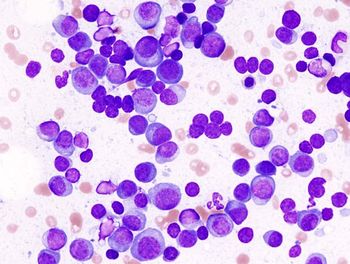
- Oncology Vol 28 No 1S
- Volume 28
- Issue 1S
(P111) Accelerated Partial-Breast Irradiation With Multicatheter High-Dose-Rate Brachytherapy: Feasibility and Results in a Private Practice Cohort
Results and outcomes of use of multicatheter interstitial high-dose-rate (HDR) brachytherapy (BT) to deliver accelerated partial-breast irradiation (APBI) in a large cohort of women treated in a three-physician private practice setting over 10 years and 9 months are reported.
Richard B. Young, BA, Clinton A. Medbery III, MD, Marianne M. Young, MD, Astrid E. Morrison, MD; Frank C. Love Cancer Institute, St. Anthony Hospital
Purpose: To report results and outcomes of use of multicatheter interstitial high-dose-rate (HDR) brachytherapy (BT) to deliver accelerated partial-breast irradiation (APBI) in a large cohort of women treated in a three-physician private practice setting over 10 years and 9 months.
Materials and Methods: A total of 241 selected patients with Tis-2 N0-1mic breast cancer without an extensive intraductal component and with negative surgical margins were treated after breast-conserving surgery (BCS) with APBI using HDR BT. Three physicians performed the procedures as part of a comprehensive radiation oncology practice. Median patient age was 61 years. Dosage regimen was initially 34 Gy in 10 fractions over 4 elapsed days; subsequently, 32 Gy in 8 fractions over 3–4 elapsed days was used. Target volume was the surgical resection bed with a 1.5–2.0-cm margin. Ultrasound guidance was used in 231 cases, and mammographic stereotactic guidance was used in 10 cases. Overall median follow-up was 67.8 months and 67.4 months in surviving patients. Local breast and regional control, cancer-specific survival (CSS), disease-free survival (DFS), overall survival (OS), late effects, and cosmesis were evaluated.
Results: Four (1.54%) local recurrences were observed. Four (1.54%) “elsewhere” breast failures (different quadrant) were observed. All local and elsewhere failures recurred 18 to 42 months after treatment. Twenty patients died of intercurrent disease, five died of breast cancer, and one is alive with metastatic breast cancer. OS and CSS rates were 89.6% and 97.9%, respectively, with a median follow-up of 67.4 months. Cosmesis was excellent or good in 96.7% of cases. Fat necrosis requiring surgical intervention occurred in 28 patients (10.8%). Median V200 in patients who developed necrosis was 13.6 cc; median V200 in those without development of necrosis was 12.0 cc. Five (2.1%) patients developed telangiectasia > 1 cm2. Three (1.25%) patients developed breast abscess requiring surgical intervention.
Conclusions: APBI using HDR multicatheter interstitial implants is feasible in small private practice with dedicated brachytherapists, yielding excellent long-term results comparable with large academic institutional series and clinical trials and also comparing favorably with the more common external beam regimens.
Articles in this issue
Newsletter
Stay up to date on recent advances in the multidisciplinary approach to cancer.

















































































